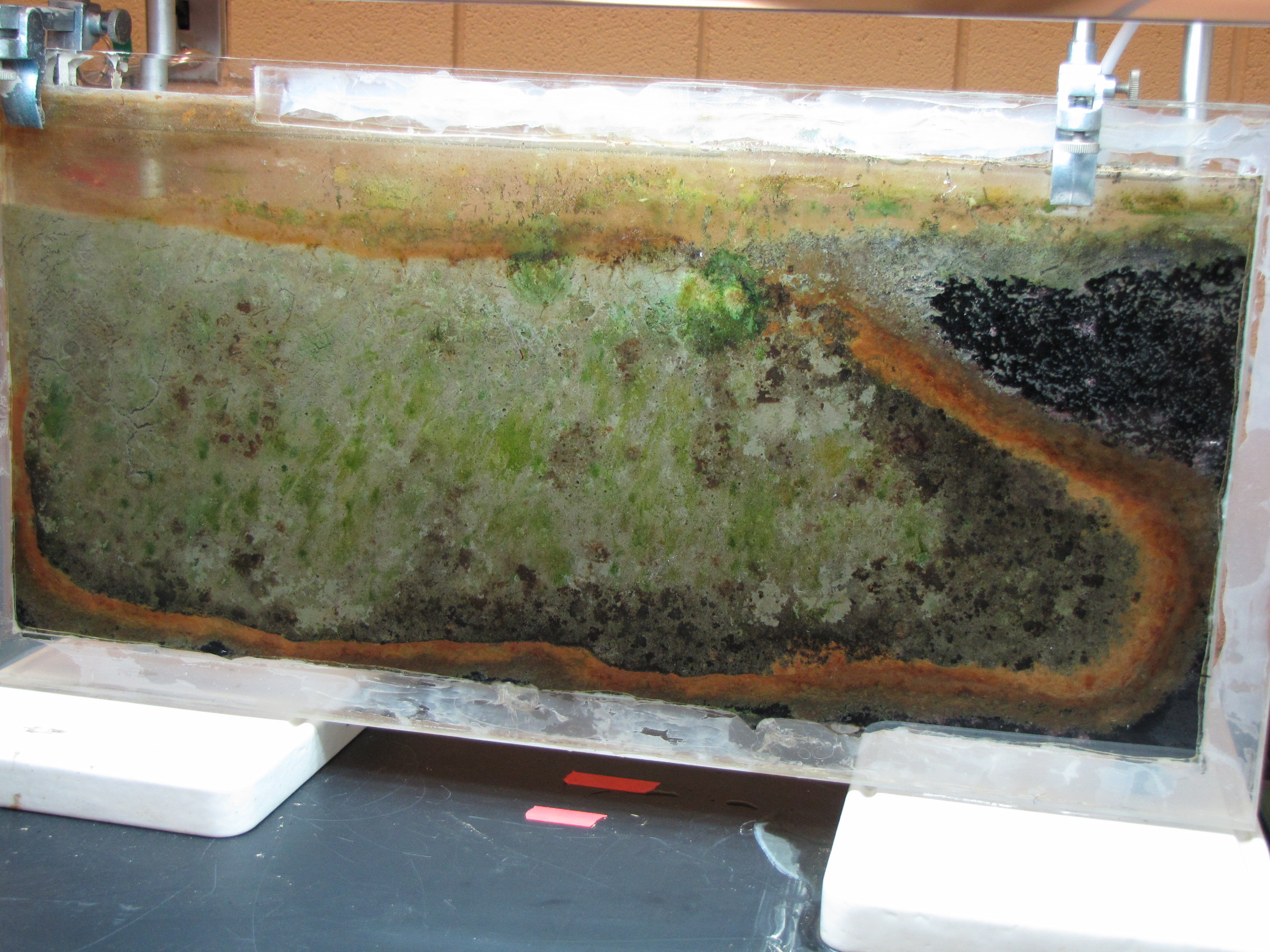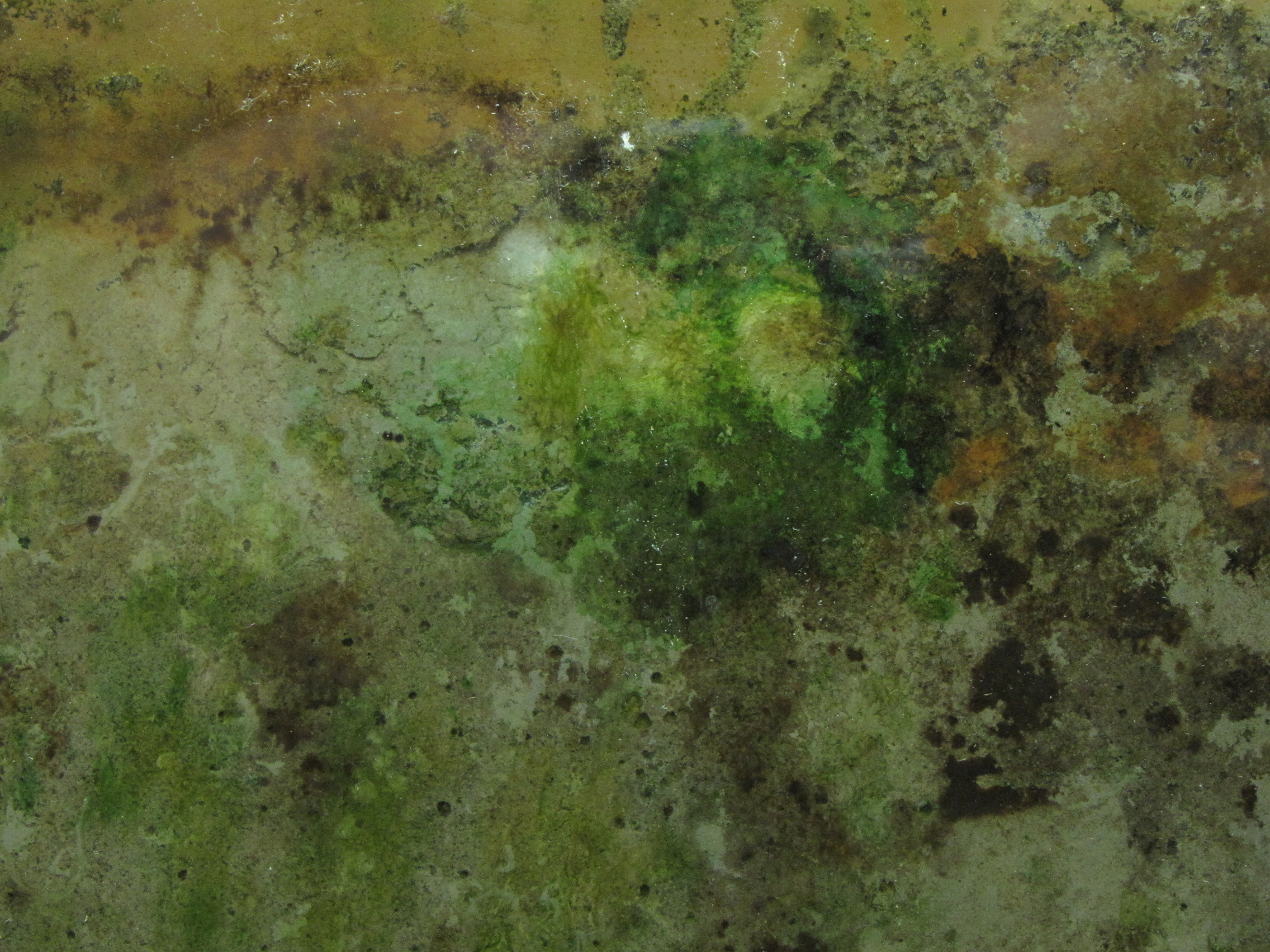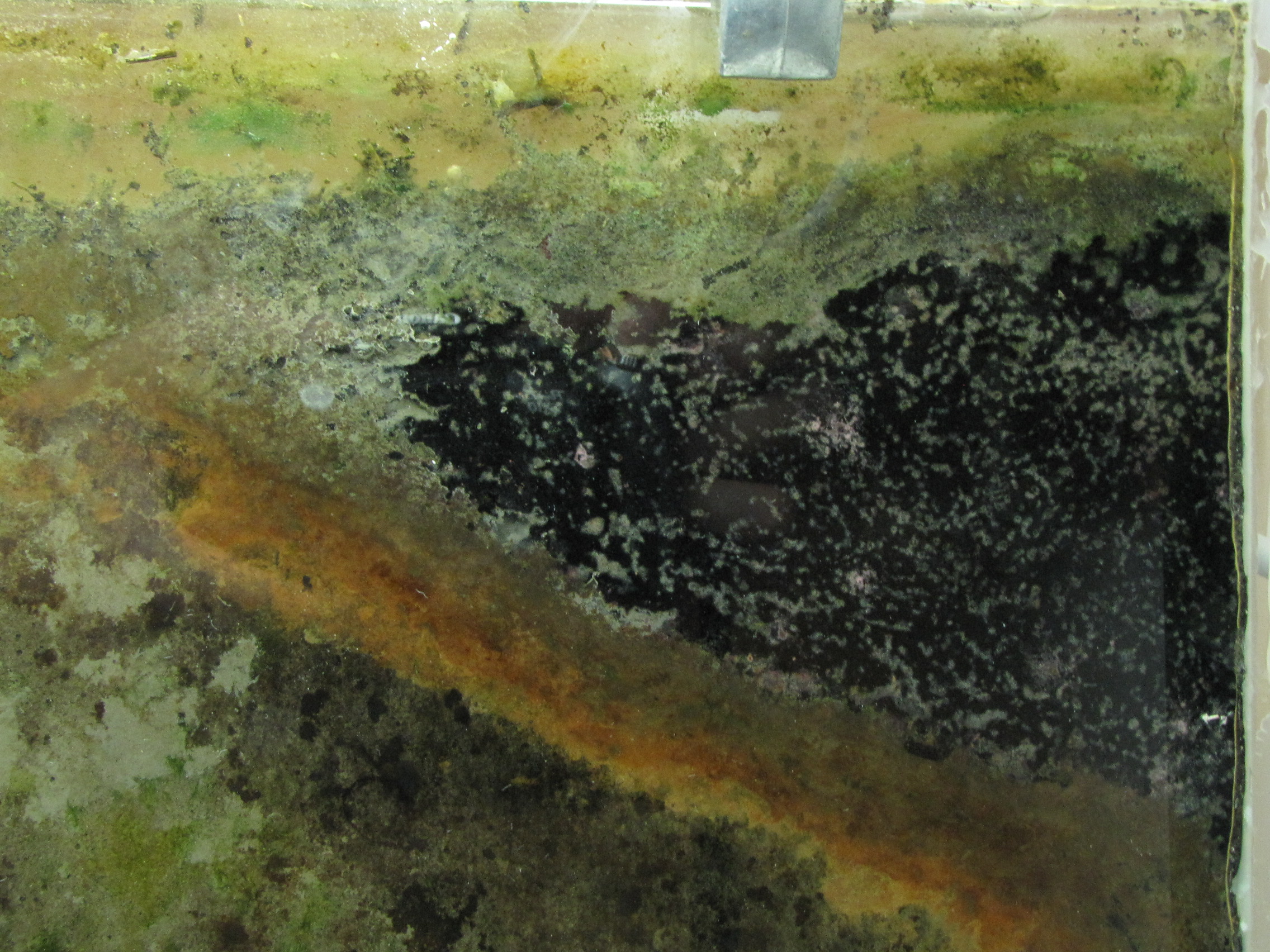The pace of the changes in the Winogradsky panel has slowed, but now some green microbes are really noticeable. There are shades of bright blue-green, yellow-greens and yellow.



The range of greens is due to different combinations of pigments in photosynthetic bacteria. I had a recent conversation with someone who didn’t realize that organisms other than plants can photosynthesize. Many bacteria can, and like plants, they use a variety of different pigments to capture energy from light and use it to drive metabolic reactions in the cell. The green is from chlorophylls, the same as plants use. These are found in the cyanobacteria, which have the deeper blue-green color. But there are many others too: the “purple bacteria” have bacteriocholorophills and carotinoids, giving them a purple, yellow or brown color, and the bacteriochlorophylls of the “green sulfur bacteria” produce green or brown colors. The role of these pigments is to absorb different wavelengths of light to harvest the energy.
Phototrophy in cyanobacteria is most similar to that of plants. In fact, the chloroplast, the organelle found in plant cells that carries out photosynthesis, is very similar to cyanobacteria. Most likely, early in the evolution of life, a larger cell engulfed an ancestral cyanobacterium and a symbiotic relationship evolved, eventually becoming plants. Like plants, cyanobacteria use water in the process of capturing light energy, producing oxygen. Some of the gas pockets seen in the Winogradsky might be oxygen. Other bacteria use a slightly different process, and use hydrogen sulfide instead of water, and produce sulfur. The sulfur forms globules, which are stored inside or outside the cell.
Not all color is from pigmentation of cells however. The red-oranges in the Winogradsky panel are likely due to a combination of pigmented cells but also due to the oxidation of iron. Some bacteria, like Chromatium, are able to use iron in phototrophy, instead of hydrogen sulfide or water. They oxidize the iron in the soil, and oxidized iron has a red-orange color (the rust on a car is oxidized iron).

